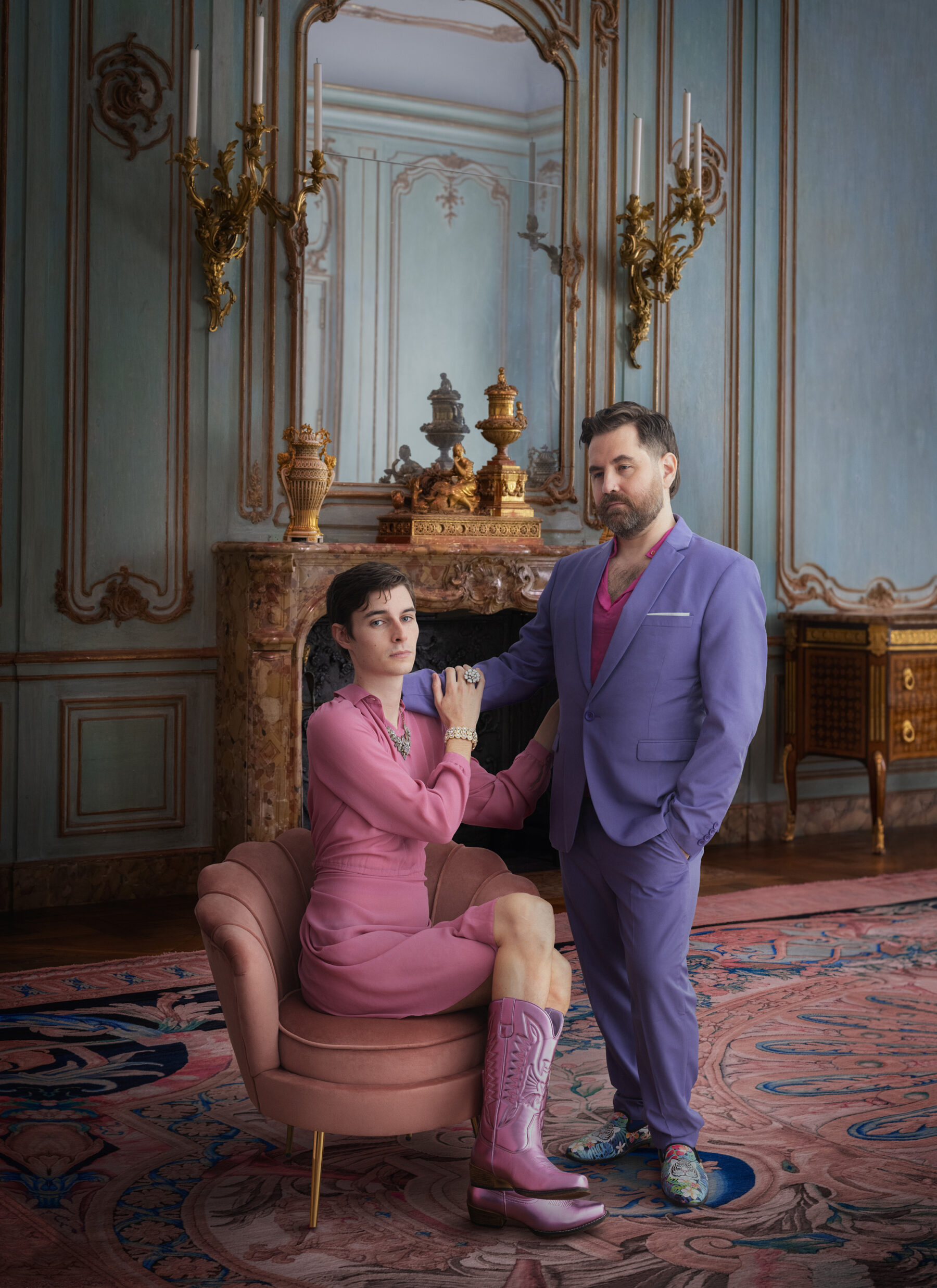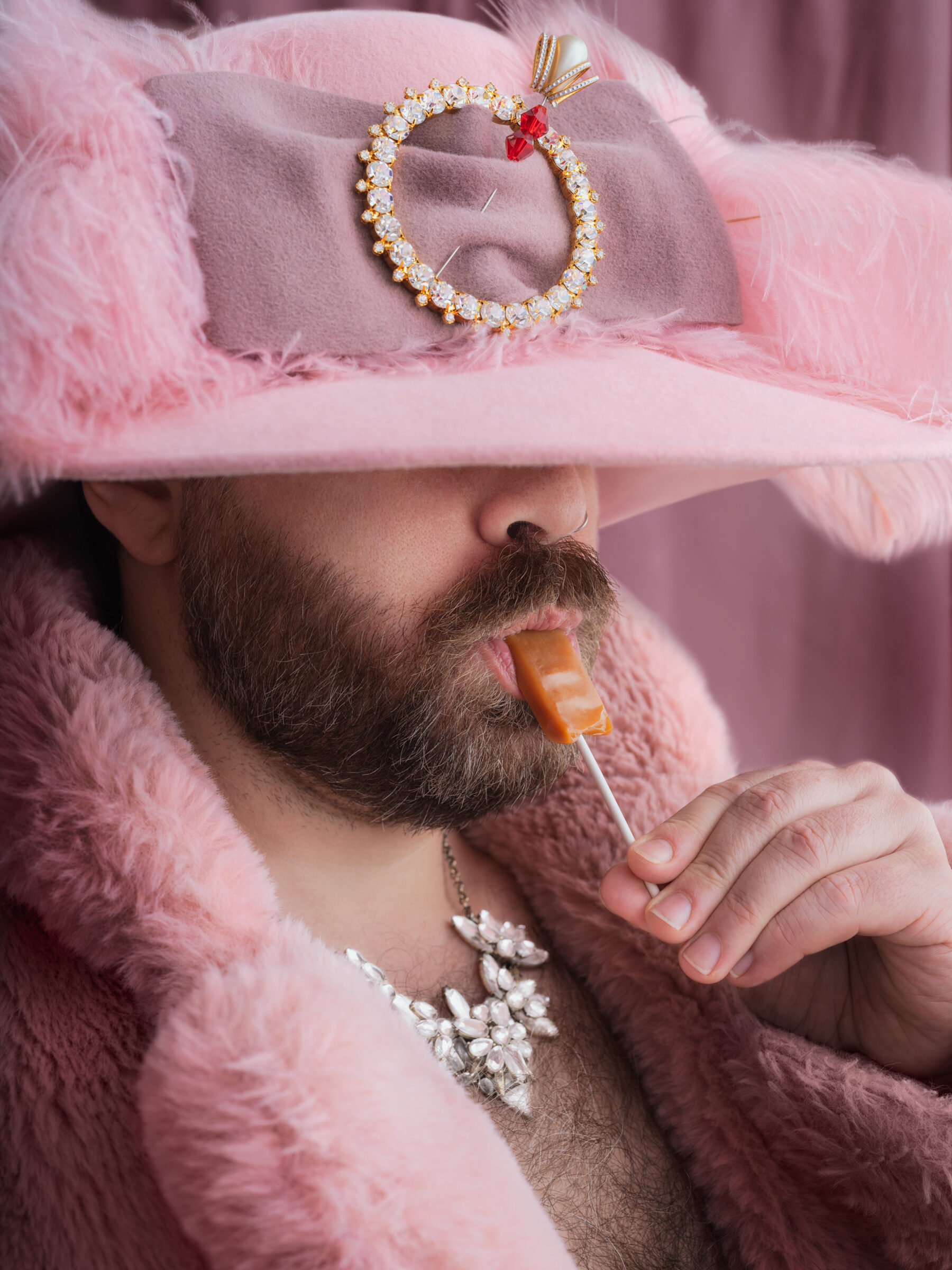Somewhere inside the walls of her San Francisco chateau, author Danielle Steel is smiling—or is simply beside herself. It all depends on how you look at artist and photographer Sean Fader’s archaeological exploits the last few years, of which Steel—a prolific romance novelist—became an unlikely fixture.
The story begins innocently enough, with Fader (Assistant Professor, Department of Photography & Imaging) making inquiries into the origins of the “sugar daddy” as part of a themed project alongside his New Orleans artist collective. He soon uncovers a century-old tale of sugar magnate Adolph Spreckels and his 24-years-younger wife, Alma de Bretteville Spreckels, for whom he purchased what is now known as the Spreckels Mansion. Perched atop the Pacific Heights neighborhood of San Francisco, the structure serves as something of a monolith to the original—and quite literal—sugar daddy and his beloved.
In a delightful twist of fate, Fader, ever the exhaustive researcher, is led to the current owner and occupant of the French Classical mansion: Danielle Steel, best known for spinning saccharine love stories for romance readers. Now weeks into a still shapeless project, and knee deep in an unlikely tapestry of archives that weave together the lives of Adolph, Alma, and Steel, Fader is left with one gnawing question: what to make of this? Or better yet, what to make about this?
At times, Fader (Assistant Professor, Department of Photography & Imaging) himself strains to explain the journey that led him to developing Sugar Daddy: Dear Danielle, a selection of portraits and self-portraits (with some seductive voiceover work by Tisch Grad Acting alum Jay Myers) shot and framed in a style that juxtaposes the historical opulence of its influences with self-aware camp. Its centerpiece, a society portrait that features Fader posed alongside a much younger lover, affirms the spirit of his work: an exercise in reimagining queerness in unexpected spaces, and an ode to the many prisms through which identity is formed and observed.
Sugar Daddy: Dear Danielle is on exhibit at Denny Gallery in New York and runs through June 24th. Visit Sean Fader’s website to learn more and experience Fader’s many projects, including Insufficient Memory, an interactive map that memorializes the sites of hate crimes committed against queer people.
When you began researching the provenance of the term sugar daddy—unconscious to the story’s eccentricities at that point—what was your roadmap for the project?
I was living in New Orleans and I was part of a group of artists that run a gallery there called Antenna Collective. We were invited to be part of Prospect 5, which is New Orleans’ big triennial. For a lot of reasons, all of which I’ll spare you, the Collective decided that the theme of the show would be sugar.
In that process I was like, okay, we have somebody over there that's doing the history of sugar plantations in the Southeast, we have this person over here that's working on the slave trade—all of these things were already happening in the show. And I've been making a piece that is leaving Los Angeles and is going to San Francisco about the history of queer hate crimes, so I felt like I needed something to lighten my way through this. And I made the joke, ‘Well, I'm just going to do something about sugar daddies.’ Then I looked up where the term came from, found Alma de Bretteville Spreckels, and kind of got lost in her story.
I found out that she had coined the phrase ‘sugar daddy’ in 1904 to describe her husband, and I don't know how she would have thought of herself, but there's evidence of her being quite the queer ally.
And then in the most unlikely of turns, this leads you to the romance novelist Danielle Steel…
I was reading a lot about this big, gorgeous house that Alma built in San Francisco. I became obsessed with this photograph of either a trans person or crossdresser—it’s unclear how they would have identified at that moment in 1913—sitting on the arm of a chair in her house at 2080 Washington Street for the family Christmas party.
And I'm like, ‘I wonder what that house looks like; I wonder if it's still there.’ So I looked it up, and the original sugar daddy house is now being occupied by Danielle Steel. How is that possible?! So it became this dual obsession with these two women who seem to overlap in this house, but also overlap in all these other ways.

